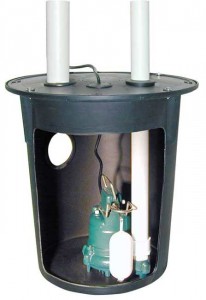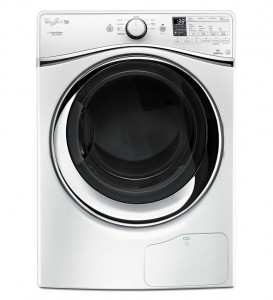We hear quite a few frequently asked questions here at Voltek. In order to help serve you better, we put together this FAQ section to help answer some of your questions.
Warning!
ELECTRICAL WORK IS EXTREMELY DANGEROUS! There is a risk of shock, severe injury, death and fire when working with electrical circuits and wiring.
If the steps in this section do not resolved your problems or you do not feel comfortable attempting them you can consult with the electricians at Voltek Electric free of charge. Just give us a call. We will ask you to try a few simple and safe steps to help with your problem. We might be able to help and save you the cost of a service call.











 Part 1:
Part 1:
- Make sure your disposal is plugged in.
- Once you have confirmed that the disposal is plugged in, turn the garbage disposal switch off and then try pushing the reset button. (It is located on the bottom of the disposal) Now try flipping the switch on.
- If pushing the reset button worked you are done. If a humming noise is heard the flywheel is jammed and will need to be freed. Read part 2: If nothing changed check to see if the electrical outlet under your sink has power. You can do this by plugging in a radio or lamp. In most cases half of the outlet is on all the time and the other half is controlled by the switch for the disposal. If power is present on the switched half of the outlet and you pushed the reset button but it still does not work you will probably need a new disposal. If no power is present continue following the remaining steps.
- Check for a tripped circuit breaker. (Read: How To Reset Circuit Breakers.) If you find that a breaker has tripped reset it and try the on and off switch again.
 Part 2:
The following steps will tell you how to fix garbage disposals that make a humming noise.
Part 2:
The following steps will tell you how to fix garbage disposals that make a humming noise.
- Turn off the garbage disposal and unplug it. You need to make sure that the power is off and the disposal is unplugged before attempting this repair.
- Insert the offset wrench that came with the disposal into the flywheel turning wrench hole (located the bottom of the disposal). For most units a ¼ inch Allen wrench will work too. Turn it back and forth until the flywheel moves freely. Remove the wrench and carefully remove the obstruction inside the disposal if possible. With the switch still off, plug the disposal in again. You are now ready to try the switch. Be sure to run the water before turning on.
- Some obstructions are larger than others. If using the offset wrench does not dislodge the obstruction you may have to insert a stick into the drain hole and force against the grinding mechanism. Make sure the disposal is unplugged. Once dislodged, reach in the drain hole and try to remove the obstruction. With the switch still off, plug the disposal in again and push the reset button. You are ready to try the on and off switch. Make sure the water is running before turning on.


Fuse Boxes
Your house was built long time ago if you have fuse box to distribute power. Many homeowners get annoyed with replacing blown fuses due to many more appliances we’re all using today and often increase the size of the blown fuse to “solve the problem”. Wiring gets overloaded and overheated. This is a serious fire hazard. The real solution is to update your electric service and install high quality electrical panel with circuit breakers.
Dimmer Tips
Most dimmers in your home are rated at a maximum of 600 watts. This is equal to 10 sixty Watt light bulbs, or 6 one hundred Watt bulbs. In most cases If there is more than one dimmer in the same location. The wattage rating of the dimmer can be reduced. For example a 600 watt dimmer can be reduced to 400 watts or more. You can install a higher-wattage dimmer for connecting more than 600 Watts to one dimmer. If you have any additional questions, give Voltek Electric a call at 262-224-3226, or you can reach us through our online contact form.


Selecting a qualified electrical contractor for your home or business can be challenging.
You know something is wrong, but you don’t know enough on your own to fix the problem yourself – or you are at the mercy of the supposed expert. You also might have difficulty describing your problem completely, or be confused by the jargon used by the professionals.
Here are a few questions to help you decide – and don’t forget to inquire about the contractor’s warranty and insurance, and be sure to get it in writing.
Does the contractor guarantee that the work installed will meet the current code?
Voltek checks the area of where they are working and routinely checks for electrical code changes in those areas.
Last but not least…
Always insist on a written estimate and a copy of the contractor’s insurance certificate.



